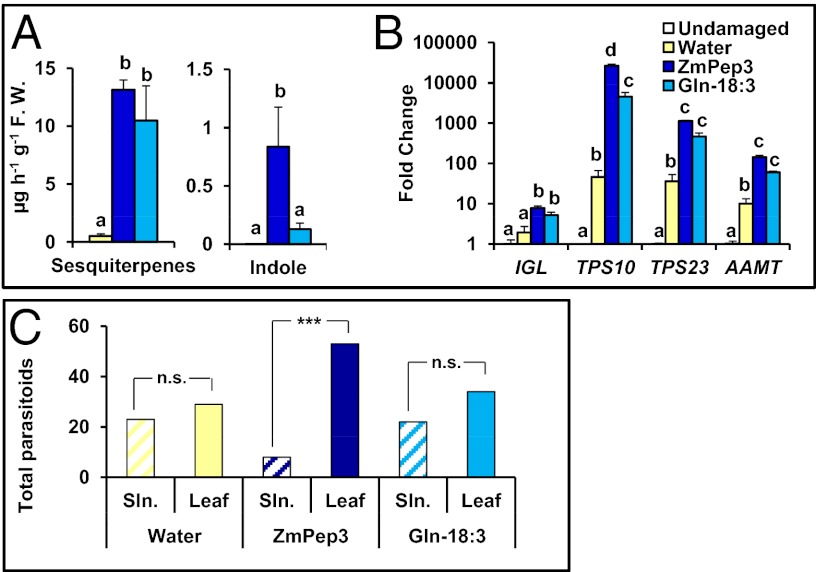Fig. 3.
Responses induced by ZmPep3 are effective indirect defenses against S. exigua herbivory. (A) Emission of total sesquiterpenes and indole 16 h posttreatment. Statistics were used to compare plant tissues that were damaged and treated with either water, ZmPep3, or Gln-18:3 each applied at 2 nmol⋅g−1 FW. Within each plot, different letters (a–c) represent significant differences between mean values (n = 4, ± SEM; all ANOVAs, P < 0.005; Tukey test corrections for multiple comparisons, P < 0.05). (B) Relative expression of genes encoding enzymes for the biosynthesis of the emitted volatiles indole (IGL), E-α-bergamotene (TPS10), E-β-caryophyllene (TPS23), and methyl anthranilate (AAMT) 12 h posttreatment with water (yellow), ZmPep3 (dark blue), or Gln-18:3 (light blue) as determined by qRT-PCR. (C) Attraction of the parasitoid C. marginiventris to leaves (crosshatched bars) incubated in water, ZmPep3, or Gln-18:3 solutions (each at 200 pmol⋅g−1 FW) and to the respective solution controls (open bars); representation of combined results from 10 replicate experiments (stars show significant differences between solution controls and incubated leaves; ***P < 0.001; NS, not significant).

